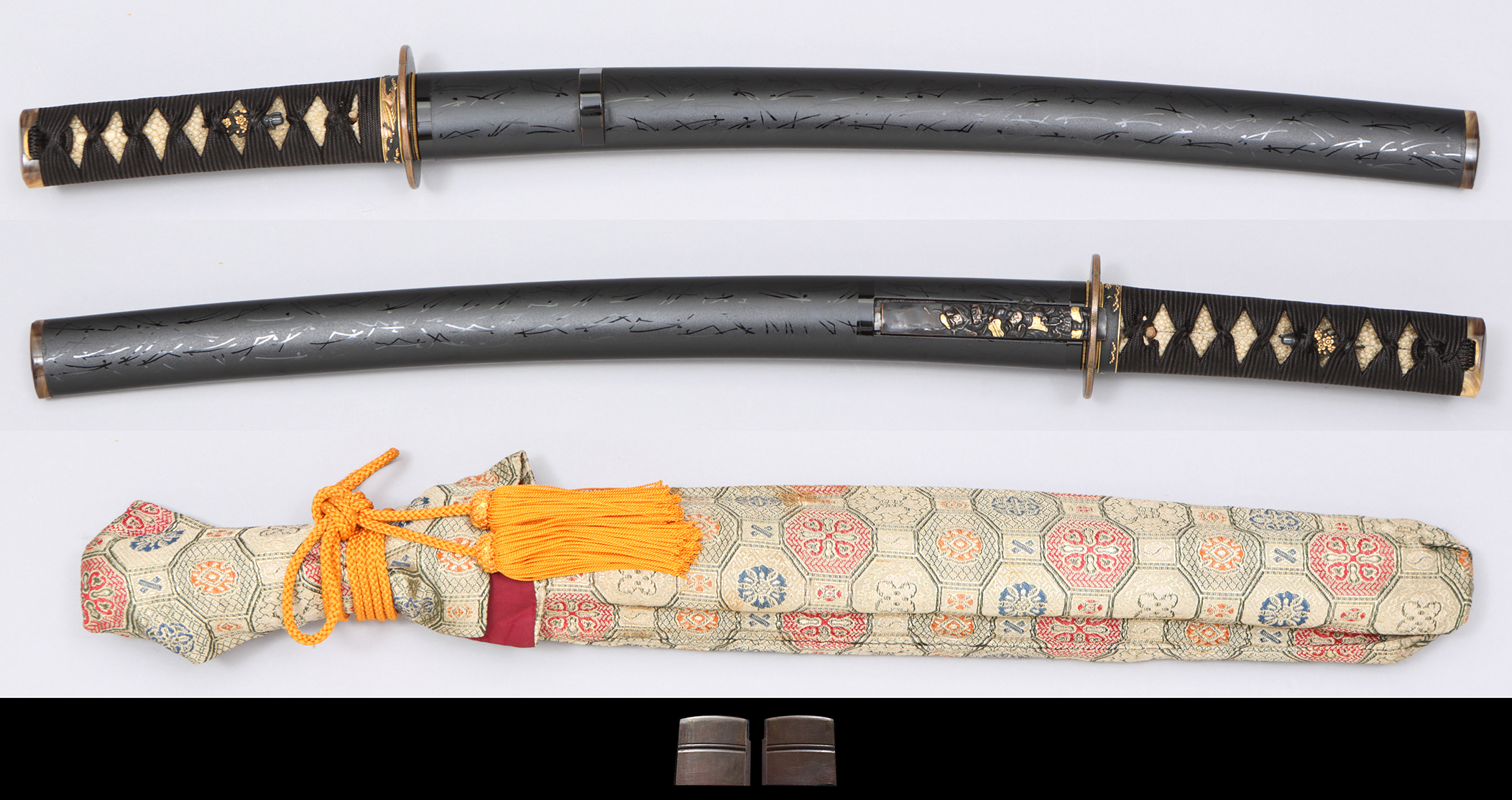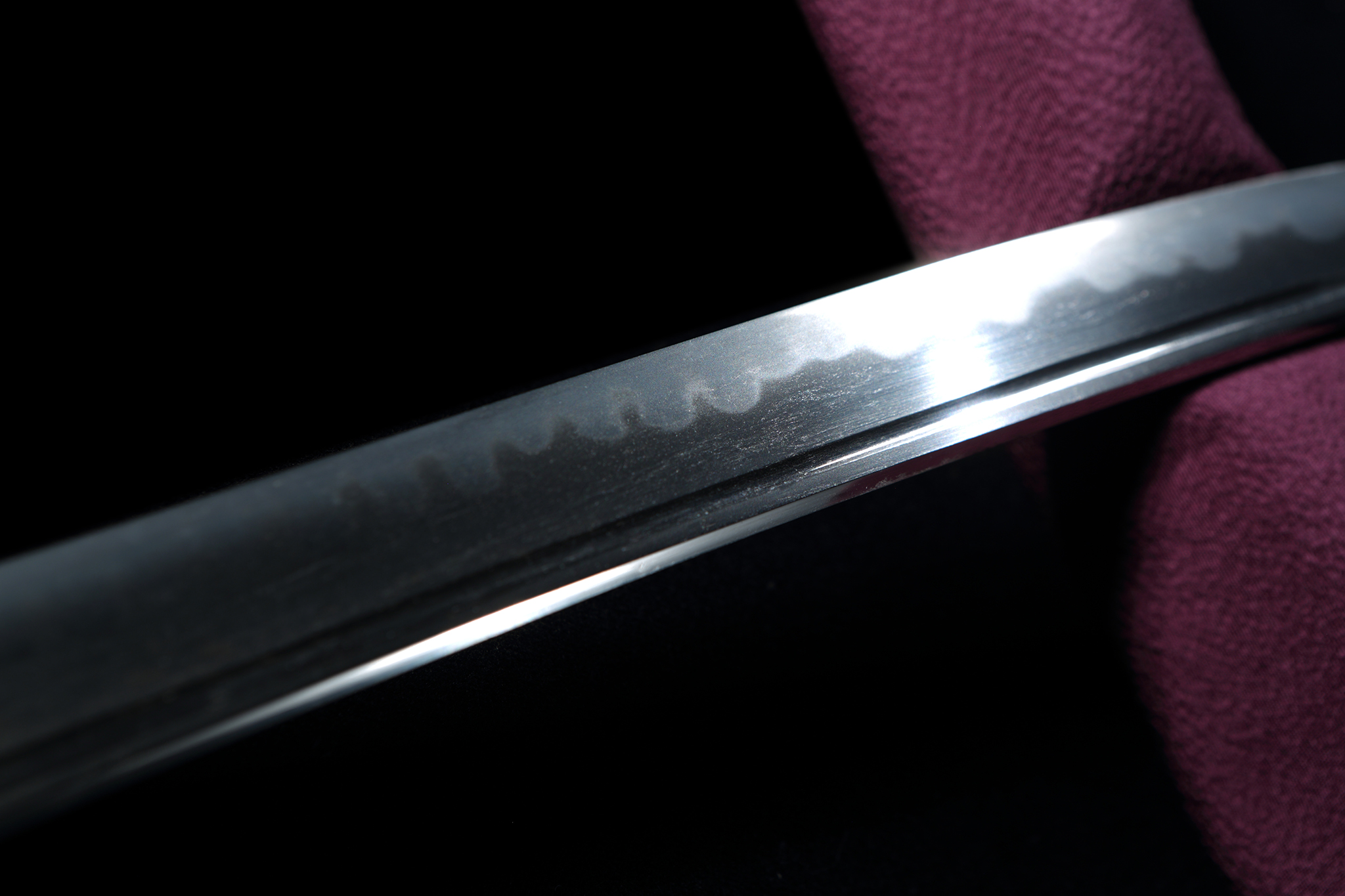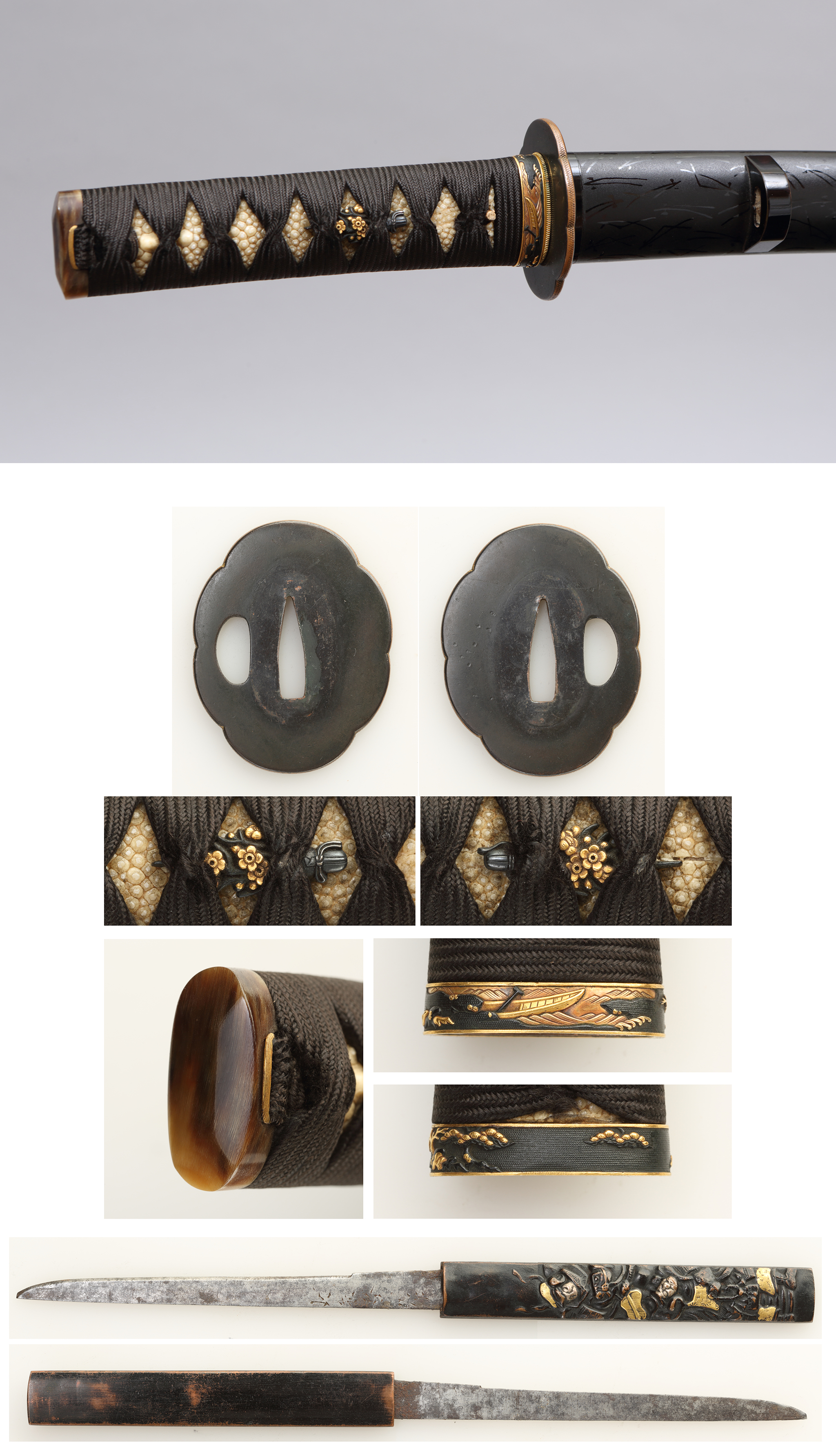
  |
Tanto, Koshirae |
Kanetomo
|
[ Signature ] omote : 兼友 ura : - |
[ Size ] Blade length 30.1cm ( 9 sun 9 bu 3 rin), sori 0.3cm (9 bu 9 rin), moto-haba 2.78cm, moto-kasane 0.60cm, mekugi-ana(holes) 2, blade weight 195.6g , shirasaya length 99cm |
[ Period ] Muromachi, second half of. |
[ Province ] Mino, Seki. |
 |
[ Feature ] |
[ Attachments ] Habaki(suaka-ji, single), koshirae, bag of koshirae and NBTHK hozon paper (issued on 25th June Reiwa 2(2020)). |
  |
[ Item number ] A121023 [ Price ] JPY 320,000 (shipping and insurance fee are not included in the price) |
Please order by E-mail.

About TOUKEN KOMACHI
BACK
TEL +81-(0)3-5284-9014/ FAX +81-(0)3-5284-9043____E-mail : s_tsukada@toukenkomachi.com
Copyright © 2009-2024 Touken komachi All rights reserved. |